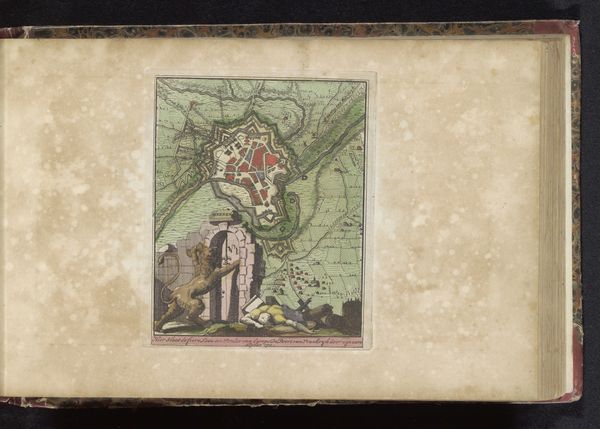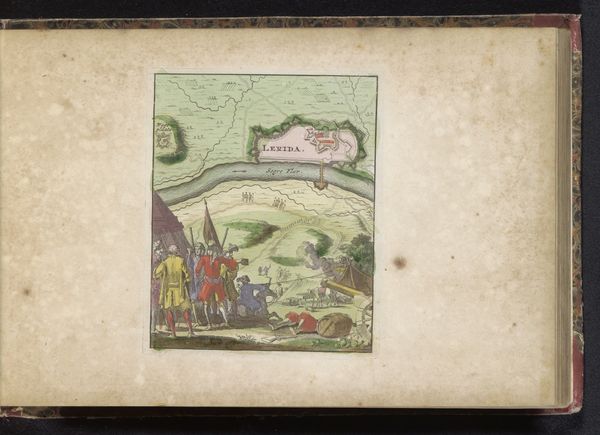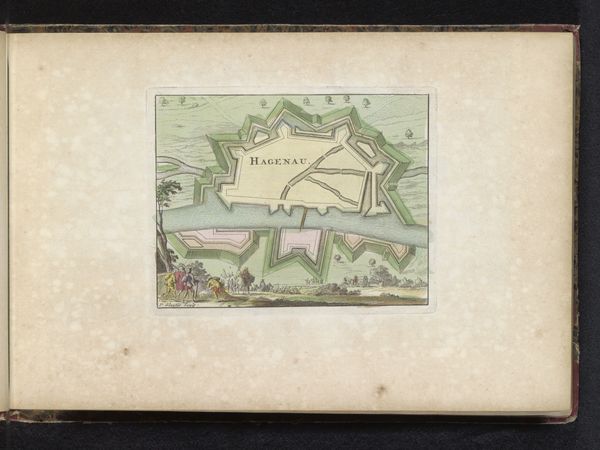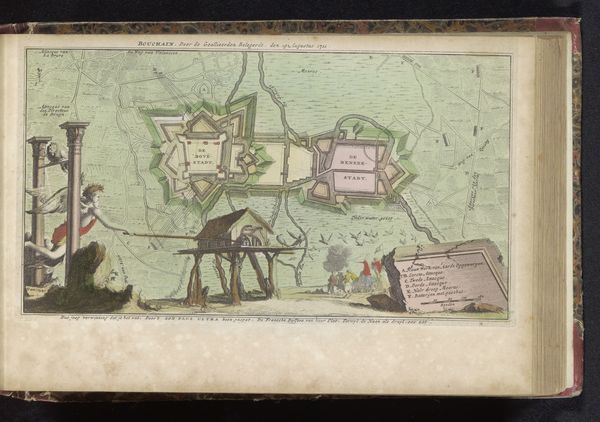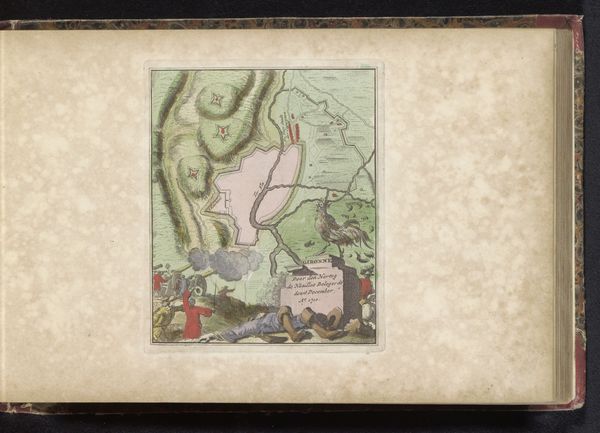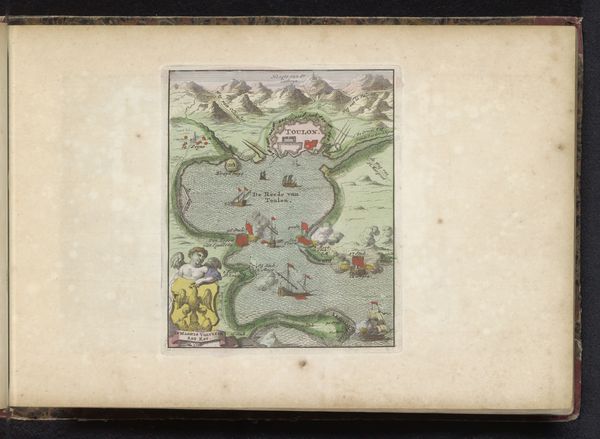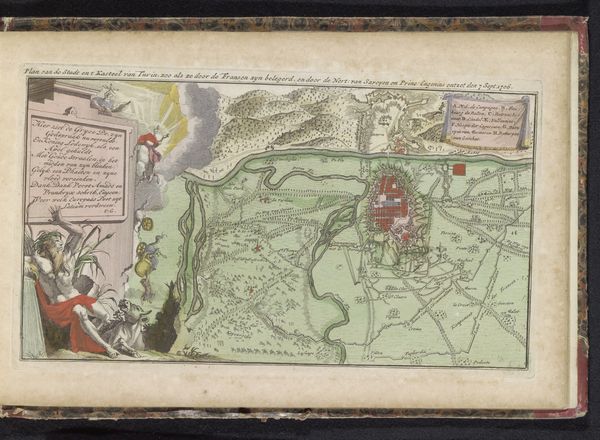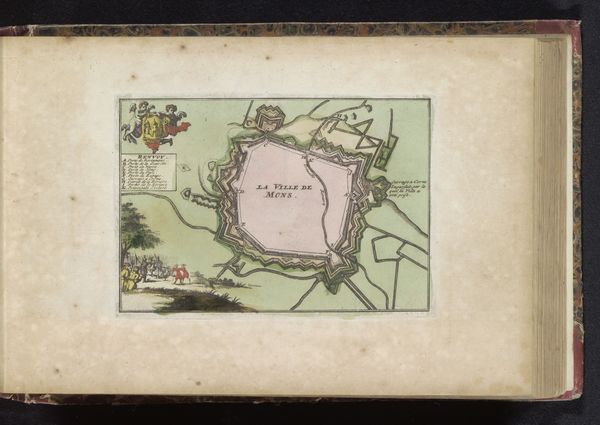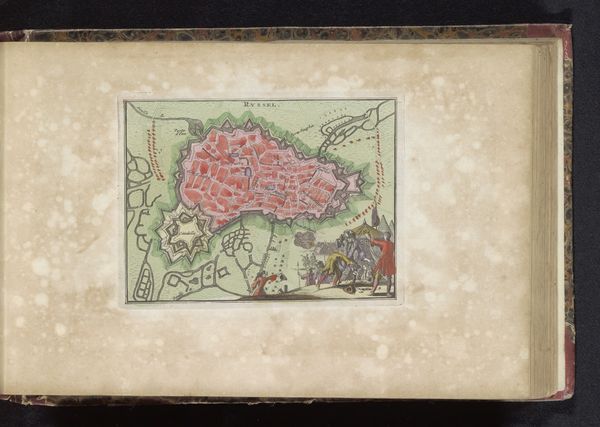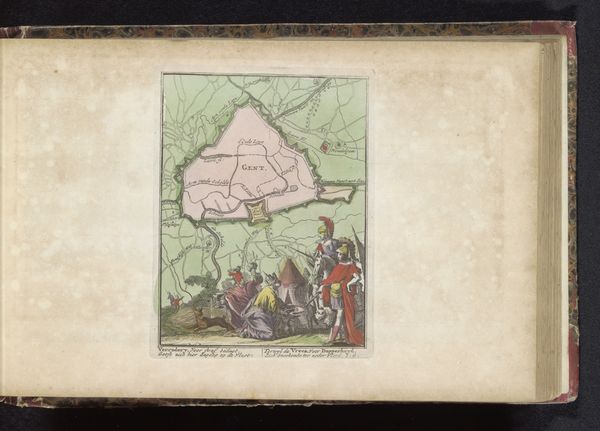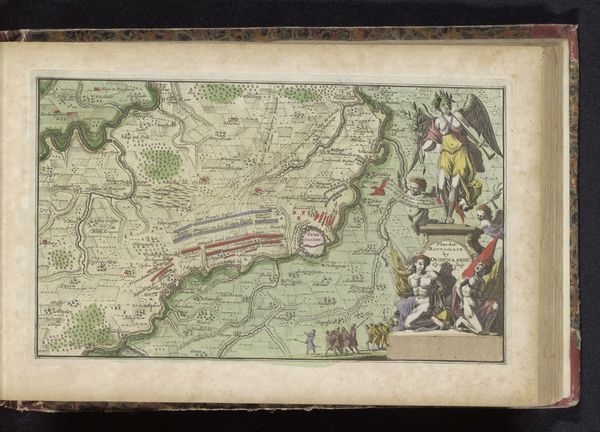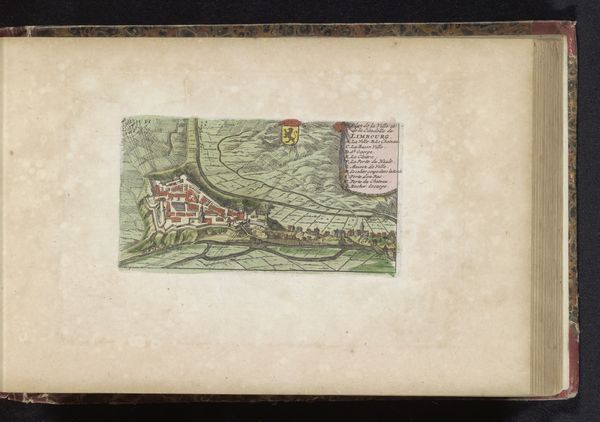
drawing, print, paper, watercolor
#
drawing
#
baroque
# print
#
landscape
#
paper
#
watercolor
#
coloured pencil
#
history-painting
Dimensions: height 155 mm, width 128 mm
Copyright: Rijks Museum: Open Domain
Curator: Let’s examine this fascinating print entitled *Beleg van Ath, 1706*, a historical landscape rendering from around 1735 by an anonymous artist. It seems to employ both drawing and printmaking techniques with paper, watercolor, and perhaps colored pencil, capturing a military siege. What are your initial impressions? Editor: Immediately, I see the city itself rendered almost like a fortress of the mind—rigid geometry contrasting with the seemingly chaotic flurry of human activity around it. There's a real tension here. The red flags and splashes suggest urgency and conflict. Curator: Indeed. The strategic depiction of Ath is rendered almost abstractly, yet it highlights the role of cartography in military campaigns. During this era, images of sieges weren't just about aesthetics; they were vital documentation used to disseminate information. This print serves as a potent form of propaganda. Editor: The lower part, though, draws my eye to the cluster of figures—the artist seems concerned with the human drama. There is a visual imbalance between the rigid precision of the fortress layout above, with its symbolic walls of protection and regimentation, versus the seemingly chaotic nature of military conflicts portrayed in miniature down below. The siege works both on an earthly, representational scale, but also serves as a larger symbol of cultural fortification against exterior "threats" and societal destabilization. Curator: I agree. We must consider how the Dutch Republic perceived itself through images like these, especially with this almost "clinical" yet propagandistic portrayal. It provided a clear "us versus them" mentality during periods of prolonged European conflict. The anonymous nature of the print speaks to how such images circulated widely and shaped popular opinion. Editor: So, this artwork acts almost like a dreamscape of conflict; a marriage between emotional narrative and cultural history painted by the unknown experiences that hide behind those fortified fortress walls. This interplay leaves me wondering what kind of cultural dialogue can emerge through periods of intense crisis like these. Curator: Looking closely reminds me how constructed collective memory can be, especially during wartime, influencing our reading of maps and motives in present and future conflicts. Editor: Yes. Seeing that combination is surprisingly thought-provoking—bringing forth dialogue in many directions on an emotional level and through a much wider historical, cultural context.
Comments
No comments
Be the first to comment and join the conversation on the ultimate creative platform.
